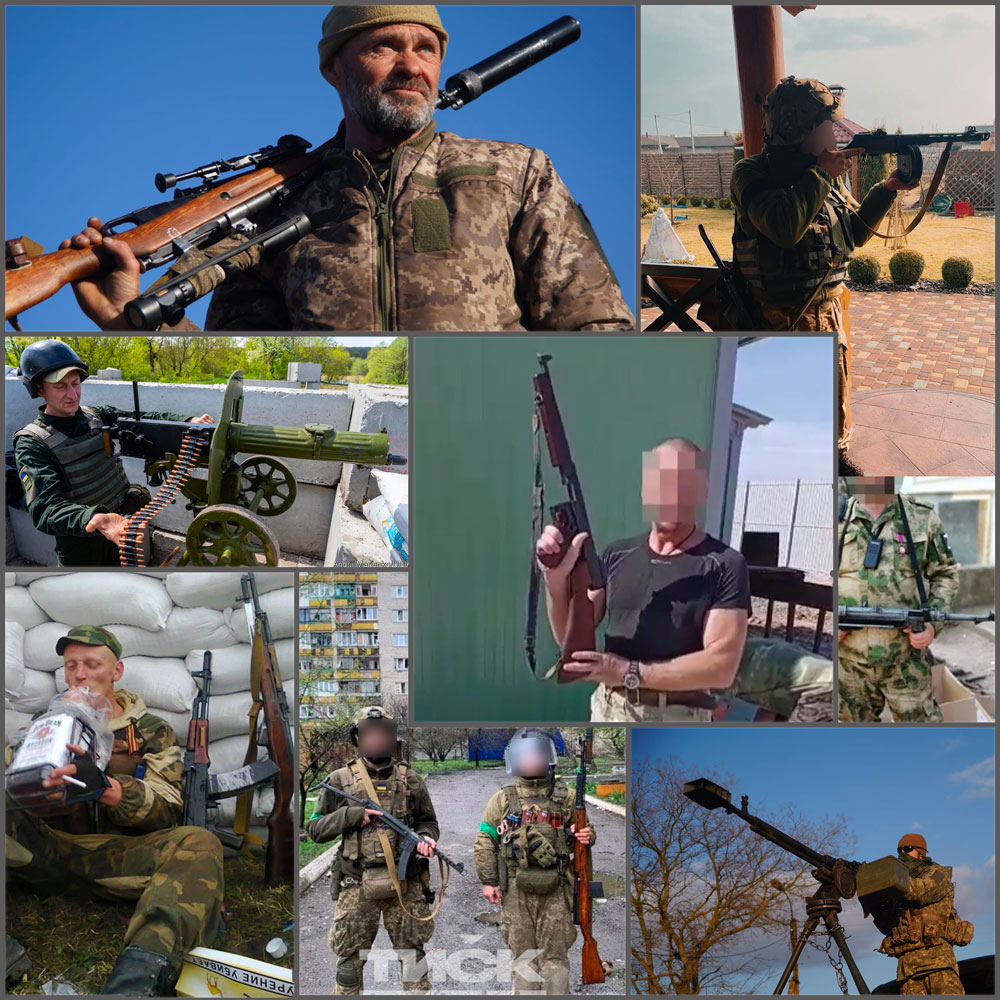The ongoing Russo-Ukrainian war showcases a mix of advanced weaponry, including state-of-the-art air defense systems, hypersonic missiles, and the newest drones, alongside the enduring utility of older tactics and arms.
While weapons from the 1970s-1990s are the most common, older firearms can still occasionally be spotted on the battleground of the Russo-Ukrainian War. Russian and Ukrainian forces are sometimes employing World War I and II-era firearms from vast Soviet-era arsenals, now relevant due to shortages of modern arms and ammunition for diverse arrays of military units deployed by both Ukrainians and Russians.
"Though these weapons seem antiquated, they are still perfectly serviceable and lethal in the right hands, and it's the case today of any weapon being better than no weapon at all," British historian Mark Felton noted in 2022.
In 2023, the Moscow Times reported that Russia ceased the disposal of Soviet-era older weapons following its 2022 invasion of Ukraine, amid reports of equipment shortages in the Russian army. As the war drags on, more and more older equipment shows up on the battlefields.
The echoes of the Second and even the First World Wars resonate not only in African or Middle Eastern conflicts but also in the actions of Ukrainian military personnel and Russian occupiers, illustrating the enduring relevance of past wars in the modern world, Militarnyi says.
Here are several old firearms spotted on the frontlines.
Machine guns
Maxim M1910
Ukrainian forces have effectively used the century-old Maxim Model 1910 machine guns to counter Russia's traditional battle tactics in the positional warfare of 2015-2021 and against Russia's WWI-style frontal assaults in 2022-2023. The M1910's water-cooled barrel allows for longer bursts of sustained fire, making it particularly useful against waves of attacking forces, a tactic reminiscent of WWI.
Both Russian and Ukrainian forces are known to be using Maxim machine guns.

Introduced in 1910, the Maxim M1910 was produced in large quantities by the Soviets, ensuring a ready supply of weapons and ammunition in Ukraine. The Ukrainians have upgraded the Maxims in various ways, including adding modern optics and suppressors:
Only in #Ukraine: A PM M1910/30 Maxim gun with optics, stock, and suppressor. pic.twitter.com/JG1IoPEmfE
— Cᴀʟɪʙʀᴇ Oʙsᴄᴜʀᴀ (@CalibreObscura) March 5, 2023
Ukrainian forces also developed several "multi-Maxim" contraptions, mounting several M1910s together as anti-aircraft guns to target Russian drones. Here is one of those:
https://twitter.com/TarmoFella/status/1631233163509784579?s
WWII's DShK, M2 browning, DP, RP-46 machine guns
Among the WWII machine guns, the Soviet 12.7x108mm Degtyarev-Shpagin DShK (1938) and the American M2 Browning (1921) are the most iconic, and both were spotted on the battlefields in Ukraine.
Many frontline photos and videos show the Ukrainian troops using the DShK.
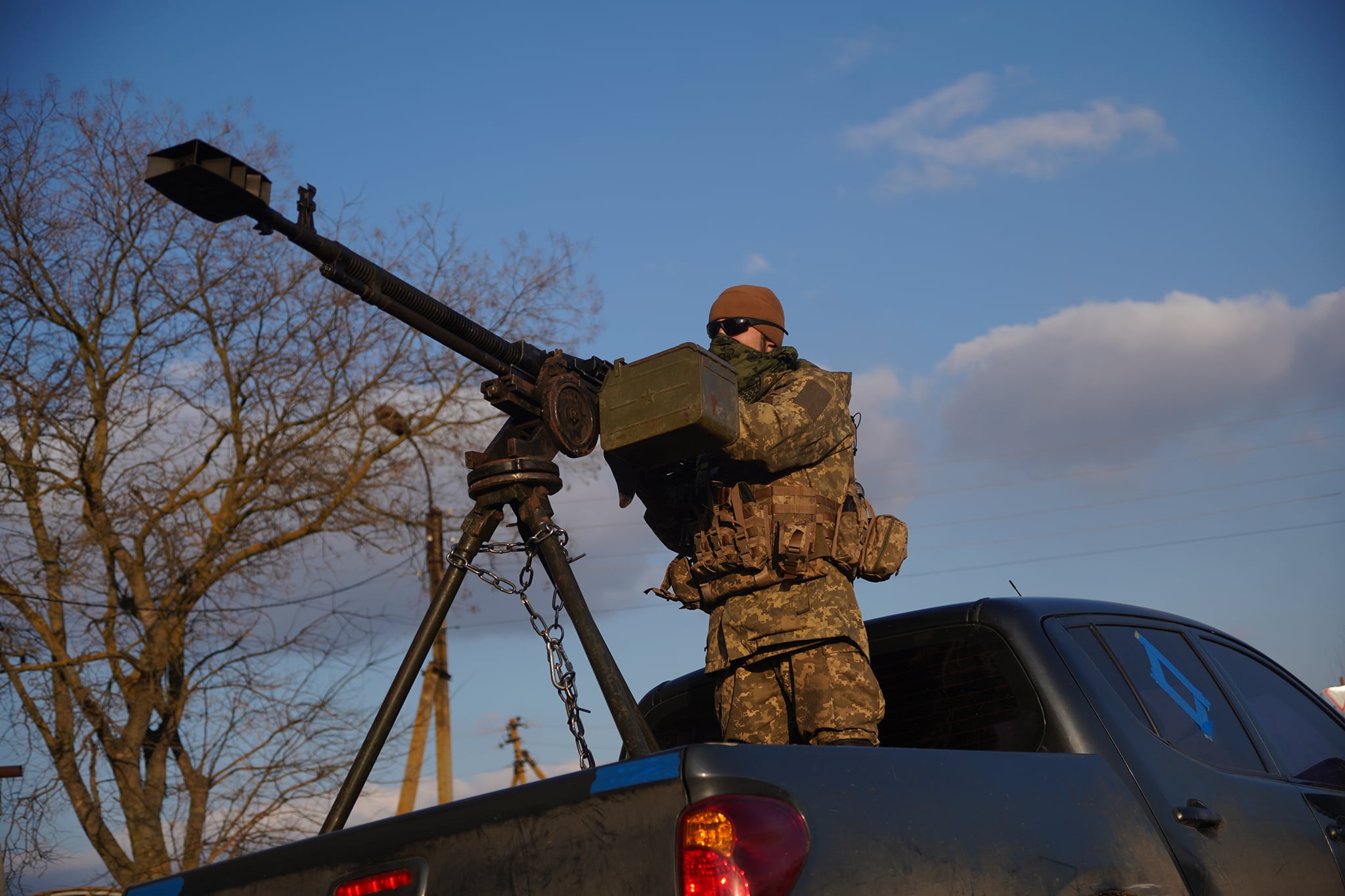
The M2 Browning can also be often spotted in battle videos:
https://twitter.com/Blue_Sauron/status/1578399187309305860?s
The Ukrainian Defense Forces also use the rarer Degtyarev Infantry Machine Gun (DP, 1928). Ukraine has approximately 120,000 DPs and 19,000 DPMs, while Russian forces rarely use them, and those in use are likely trophies.
https://twitter.com/EllenJeanAbare/status/1586336479311077376
The 7.62x54mm RP-46 (1946) is a rare model, with around 40 in Ukrainian defense warehouses, some used by Ukraine's Dnipro-1 battalion during the Russo-Ukrainian War's ATO phase, and a few after Russia's full-scale invasion.
Degtyaryov RP-46 and DS-39 in #Ukraine pic.twitter.com/8wKFRuMgU7
— Abraxas Spa (@AbraxasSpa) August 3, 2015
Submachine guns
PPSh-41
The Shpagin submachine gun "PPSh-41' is a Soviet submachine gun chambered for the 7.62x25mm TT cartridge, widely used during World War II. It was produced by the USSR and its allies, with around 6 million units made. The PPSh-41 was in service with the Soviet military from 1941 to the mid-1960s, when it was gradually phased out of the Soviet Army, and replaced by the Kalashnikov assault rifle. Yet the PPSh remains in service with security units in some post-Soviet countries.
The PPSh with its distinctive drum magazine, alongside the WWI-era Mosin rifle, became an iconic symbol of the WWII-times Soviet soldier in the post-war pop culture, similar to the association of the MP-40 with the Wehrmacht soldier and the Kalashnikov with the post-WWII Soviet soldier.
Shortly after the onset of the full-scale Russian-Ukrainian war, the PPSh-41 was spotted in the hands of Russian forces in April 2022, likely belonging to Russia's 1st "DNR" Army Corps.

At the time, it was unclear whether the PPSh captured in the photo was a single item or a regular armament of the "DNR" units. Later, in July 2023, a video appeared showing Russia's militants of the so-called "LNR" unpacking mothballed PPSh-41s, which confirmed that these submachine guns had been supplied to the occupation forces.
The Shpagin submachine guns were spotted in the hands of the Ukrainian military in Kyiv Oblast during the battle of Kyiv early in the full-scale invasion. Militarnyi suggests that it was "most likely" a solitary collector's item rather than a weapon widely used by Ukrainian forces at the time.
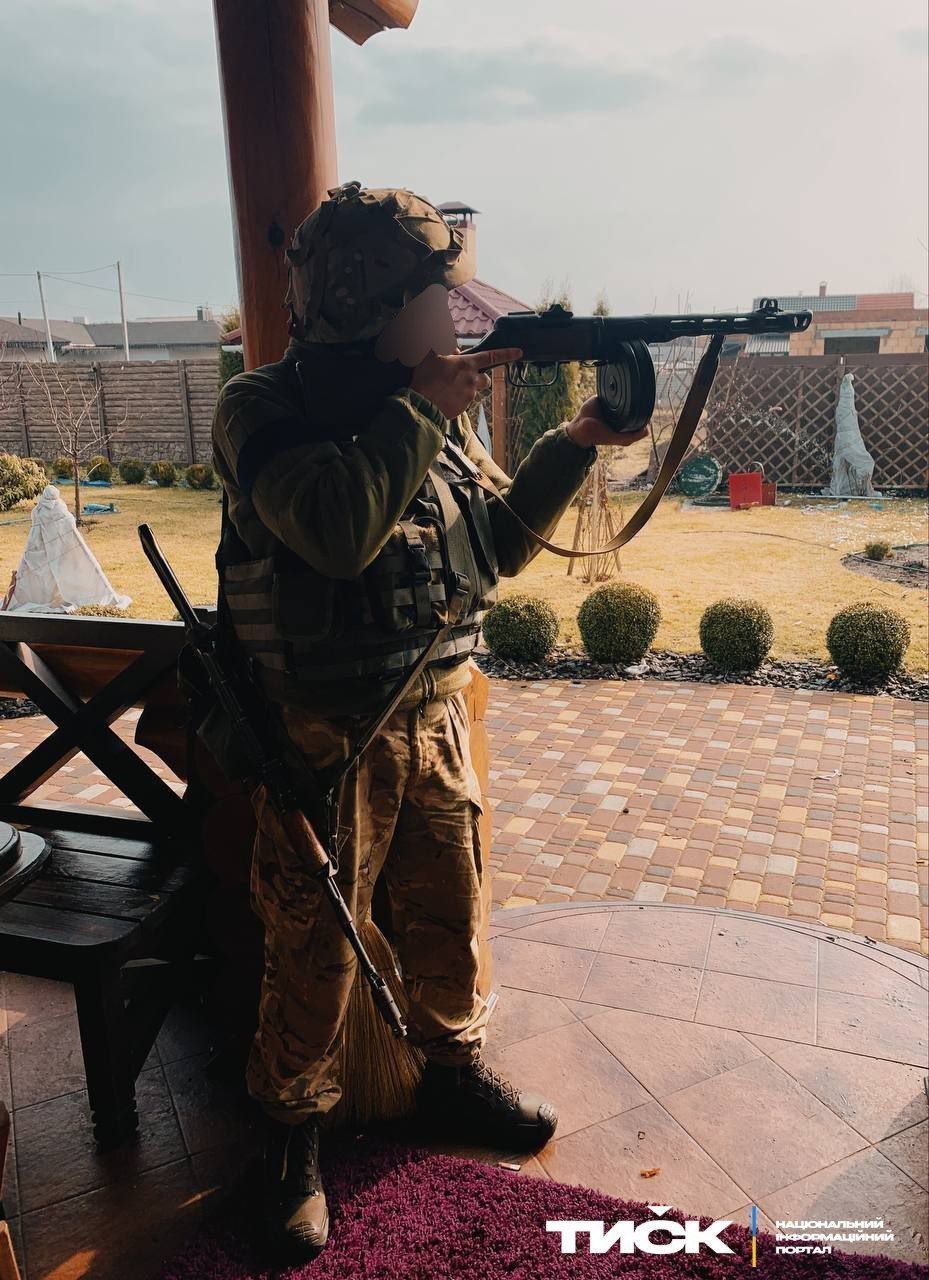
"The problem [for mass utilization of the PPShs by the Ukrainian forces] is the rare 7.62x25mm ammunition, which is almost non-existent," Militarnyi notes.
MP40
In the Russo-Ukrainian War, despite Russian propaganda labeling Ukrainians as Nazis, the German MP40 submachine guns, designed during the Nazi era, are ironically predominantly used by Russian occupation forces. Only a few instances of these guns have been observed in the hands of Ukrainian Defense Forces.
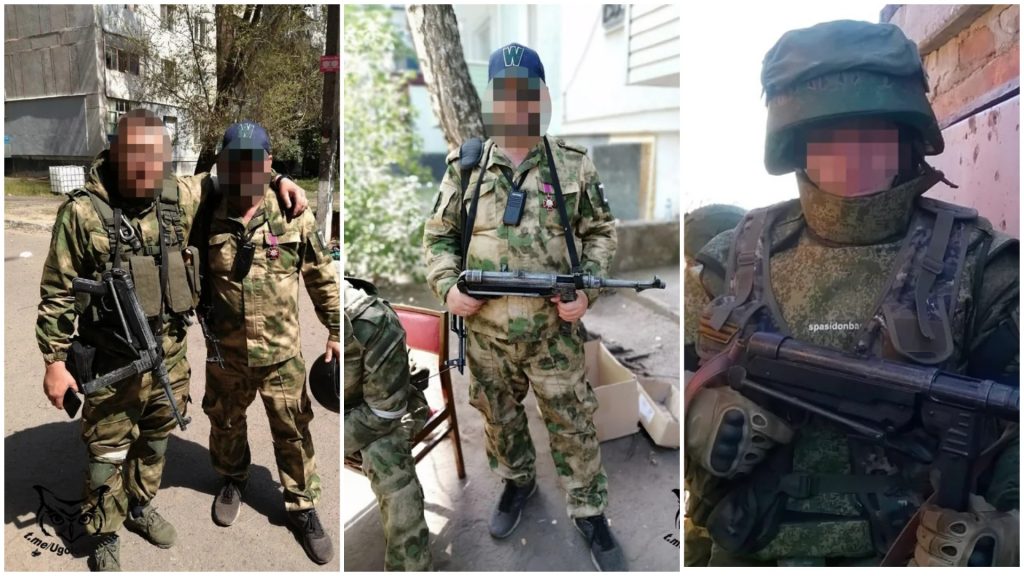
The MP40, chambered for the 9×19mm Parabellum cartridge, was developed in 1938 and extensively used by the Axis powers during World War II, particularly by Nazi infantry, paratroopers, and armored vehicle crews on both the Eastern and Western Fronts.
PPS-42/PPS-43
In addition to the Soviet-era Shpagin's PPSh, Russia's Donetsk and Luhansk colonial units were also spotted using a Sudayev submachine gun, the PPS-42 or PPS-43, chambered for the same 7.62x25mm cartridge. The PPS was developed between 1942 and 1943 as a more cost-effective and simpler alternative to the PPSh-41.
Trending Now

The PPS-43 was significantly lighter than the iconic PPSh, weighing only 3.6 kg with a magazine and ammunition, compared to the PPSh, which weighed around 6 kg with a drum magazine and ammunition. Produced from 1942 until the end of WWII, the PPS-43 was used by the Soviet army and continued in service with airborne units until 1950, when it was replaced by the Kalashnikov assault rifle's variant with a folding stock.
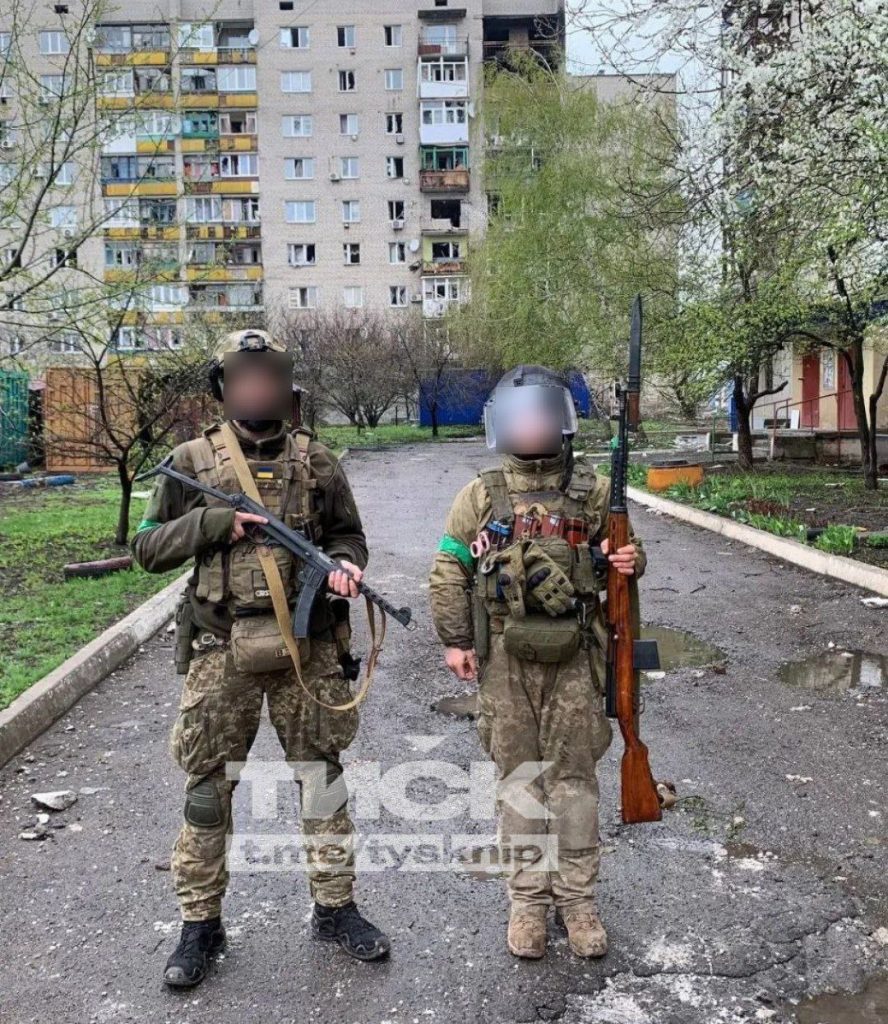
The production of the PPS submachine guns was considerably smaller than the PPSh's, with about 2 million units made in total. As a result, fewer of them remain available: Ukraine had an estimated 25,000 units, but not many have survived to the present day.
"Given the Ukrainian data, it can be assumed that the Russians also retain a large number of the PPS and PPSh, which could be used to arm mercenary, prisoner, or mobilized units. In addition, the Russians have the capability to produce 7.62x25mm ammunition [unlike Ukraine]," Militarnyi notes.
Thompson submachine gun
The American Thompson submachine gun has reemerged as a relic of the past in the Russo-Ukrainian War, appearing on both sides of the war.
The legendary "Tommy gun" was invented in 1918 as a blowback-operated, selective-fire weapon. It aimed to break the trench warfare stalemate of World War I, but early models missed combat. Widely adopted by US forces and other Allied troops in World War II, its main models were the M1928A1, M1, and M1A1. Over 1.5 million Thompsons were produced during the war.

This iconic firearm was acquired by the Soviet Union in the 1920s and through the Lend-Lease program, with around 130,000 units received. However, it did not gain widespread use in the Red Army. Its presence in the ongoing conflict underscores the enduring legacy of this classic weapon.
"As of 2011, 10,000 to 20,000 units were stored in Ukrainian warehouses. The Thompsons, as well as the PPSh, were used almost from the very beginning of the full-scale Russian-Ukrainian war, with the 'Ukrainian' ones spotted as early as April 2022, and 'Russian' ones in July 2023," Militarnyi says.
New Russian LPR Army guns:
— Clash Report (@clashreport) July 13, 2023
Simonov (SKS) self-loading carbine (1949)
Degtyarev light machine gun (1945)
Sudayev (PPS) submachine gun (1943)
Shpagin (PPSh-41) submachine gun (1941)
Tokarev (SVT-40) self-loading rifle (1939)
Lend-Lease Thompson submachine gun (version 1938) pic.twitter.com/QRouDpOQcC
Rifles
Mosin-Nagant M1891 rifle
The Mosin-Nagant, a 133-year-old 7.62x54mm rifle, stands as probably the oldest operational firearm in the Russo-Ukrainian War. However, it's important to note that such antique specimens are not as common as the Soviet-manufactured models from the 1930s.
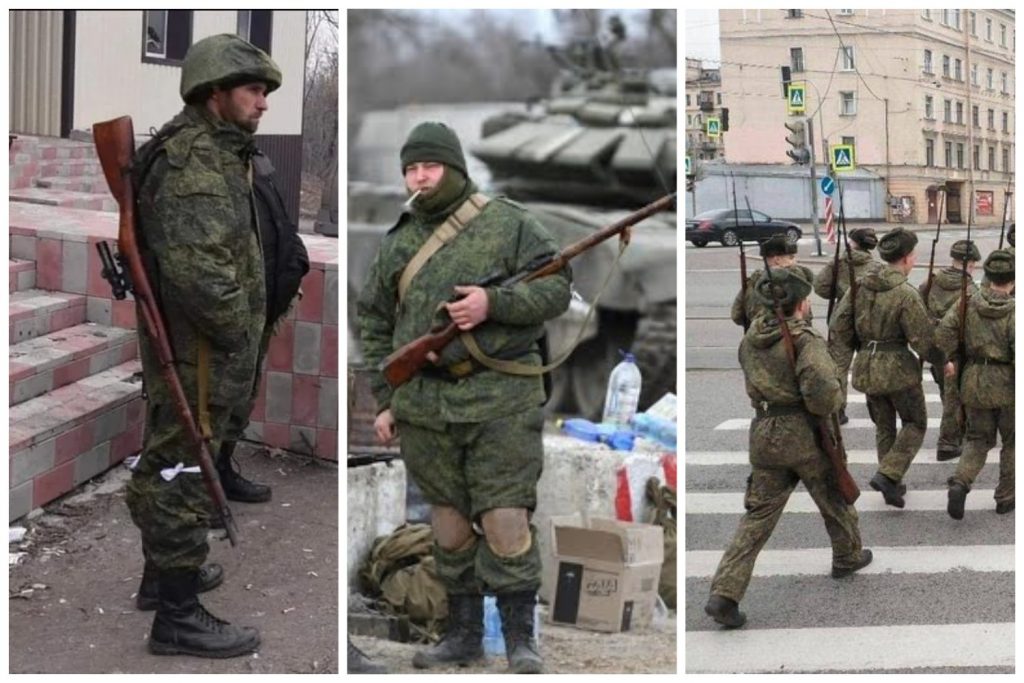
This rifle, originally introduced in 1891, is the five-shot, bolt-action, internal magazine-fed military rifle, officially known as the 3-line rifle M1891, and is primarily chambered for its original 7.62×54mm rimmed cartridge.
With over 37 million units produced, it is one of the most mass-produced military bolt-action rifles in history and has seen use in various conflicts worldwide. The most common variant is the M1891/30, introduced in 1930 with some elements from Nagant's design.
The Mosin-Nagant was widely used by the Russian Imperial Army in World War I and was the standard issue weapon for Soviet troops at the start of World War II, with millions produced to equip the largest mobilized army in history.
In the Russo-Ukrainian war, this rifle was primarily used by the LDNR's 1st and 2nd army corps, Wagner PMC mercenaries, and other paramilitary groups, although it was also observed in regular units of the Russian army and, to a lesser extent, within the Ukrainian Defense Forces. The rifle is primarily employed as a marksman weapon.
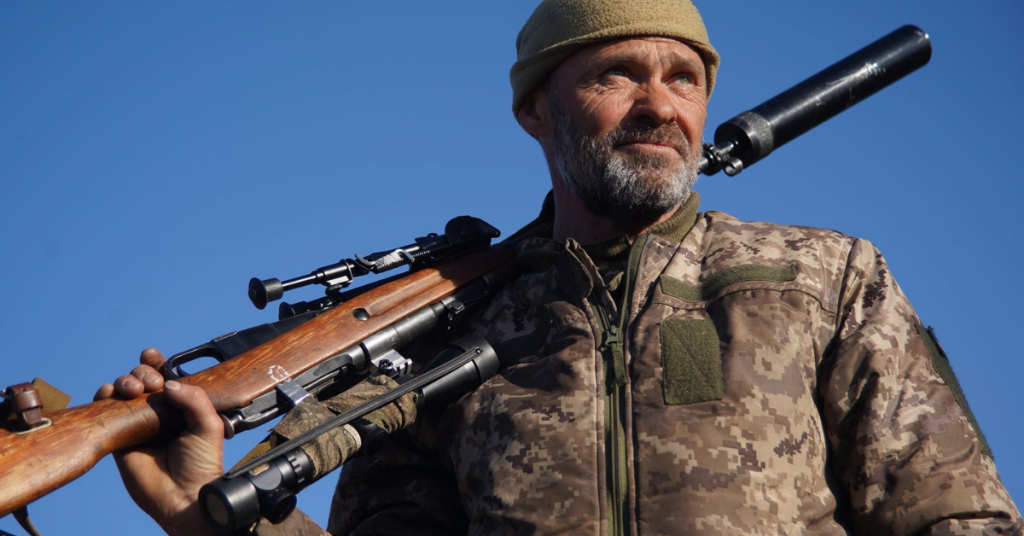
Tokarev SVT-40
The 7.62x54mm Soviet Tokarev self-loading rifle (SVT), manufactured in 1938 and 1940, serves a similar role to the Mosin-Nagant, with around 1.5 million units of SVT-40 produced in total. Ukraine has a limited number of SVTs compared to Russia; as of 2011, only 10,000 serviceable rifles were recorded.
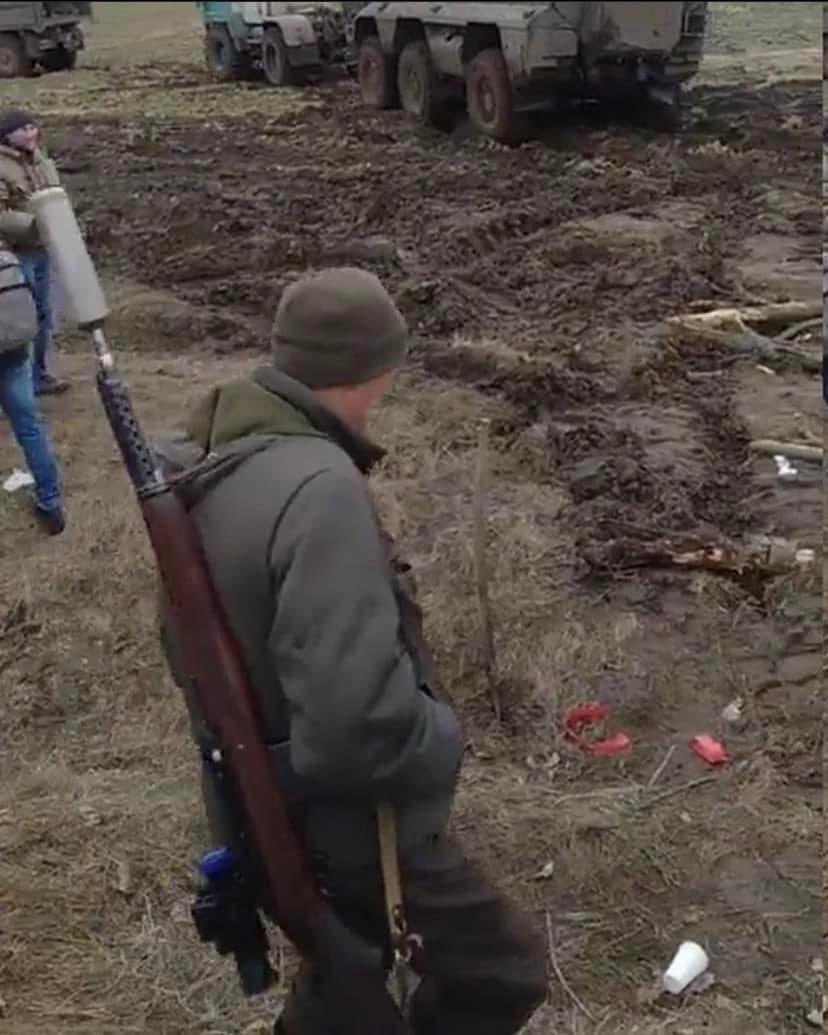
Developed in the late 1930s, Tokarev's SVT-38 and SVT-40 rifles were introduced to replace more obsolete rifles in the Soviet Army. However, its production was disrupted by the German invasion in 1941, leading to a return to the Mosin–Nagant rifle for the duration of the war. After the war, the Soviet Union adopted new rifles, such as the SKS and the AK-47.
In total, approximately 4,000,000 units of various variants of the SVT series were produced between 1939 and 1945.
The Simonov SKS
Unlike the relatively rare SVT-40 in Ukraine, the post-WWII 7.62x39mm Simonov self-loading carbines (SKS), produced since 1949, are more common, with almost 300,000 units known to be in storage in Ukraine.
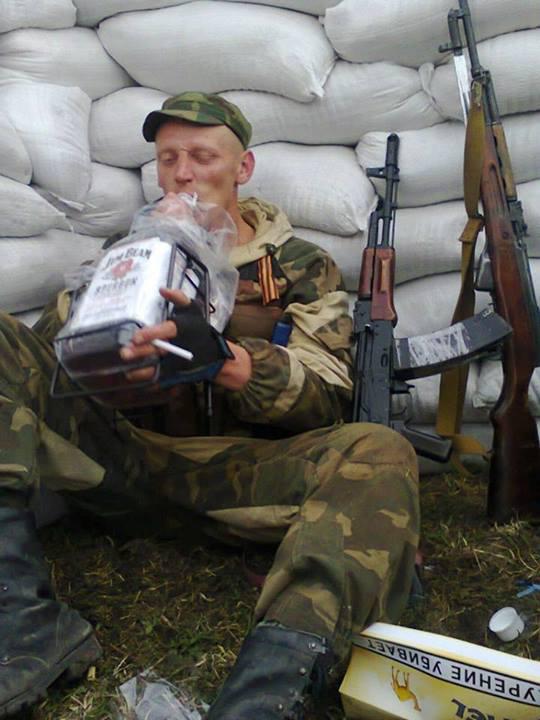
The SKS, a Soviet semi-automatic carbine, was adopted in 1949. The first units were issued to active units in early 1945, marking the only use of the 7.62×39mm cartridge in World War II. Over 15 million units have been produced, and it is still in production, primarily used for hunting.
Not only small arms
In Ukraine, not only are firearms from the 1940s and earlier occasionally seen, but any heavy equipment that can enhance firepower or serve a specific purpose is also deployed by both sides.
For example, Ukraine uses "every tool in the box" to protect its skies, from machine guns to the Patriot surface-to-air missile systems. This array includes the KS-19 100 mm anti-aircraft guns, a Soviet-era weapon first introduced in 1947. The KS-19 has been used in various conflicts across Asia and the Middle East since shortly after World War II.
Ukraine also uses the US-made 105 mm M101 howitzers and the Soviet 85 mm divisional gun D-44, both from the 1940s.
Meanwhile, Russia, in response to the loss of thousands of its modern tanks, has resorted to using its older armor, including the T-54 and T-55 main battle tanks from the late 1940s and early 1950s, and the T-62 from the 1960s, primarily as crude artillery. Despite their obsolescence as tanks, those tanks possess reasonably powerful cannons and can function as mobile howitzers, lobbing shells over short distances.
Additionally, the Russians are using older armored personnel carriers and trucks more frequently. For example, there is evidence that Russia used the BTR-50 armored vehicles from the 1950s and the GAZ-AA Polutorka trucks from the 1930s during the Battle for Avdiivka.
Ukrainian reconnaissance spotted what they claim to be a Polutorka, a 1930s pre-WWII GAZ AA truck, used by Russians to assault Ukrainian positions south of Avdeevka. pic.twitter.com/uBG2IbM4So
— WarTranslated (Dmitri) (@wartranslated) October 22, 2023
As the war persists and both sides deploy weapons from storage and retirement, more relics are likely to be documented in combat.
Read also:
- Ukraine unveils FURY: new weapon to dominate the Black Sea
- Old weapons, new tricks: Ukraine’s air defense adapts to beat Russia
- What long-range weapons Ukraine can get in the wake of Ramstein-18 meeting
- Russia using old Ukrainian missiles launched from formerly Ukrainian bombers against Ukraine, general says – NYT
- Ukraine develops new kamikaze robot to destroy Russian tanks
- Two years of all-out war: weapons of Ukrainian victory

